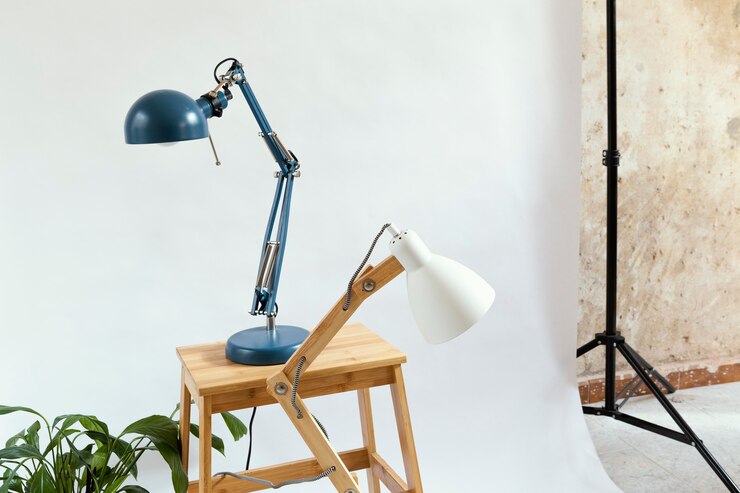Designer floor lamps are more than just a source of light; they are essential pieces of home decor that can transform a space. These lamps come in various designs that suit different styles, from modern to classic, and can fit any budget. Whether looking for a statement piece or something subtle, the right designer floor lamp can enhance the atmosphere of a room.
With options ranging from sleek and contemporary designs to vintage-inspired styles, there is a floor lamp for every taste. The choice of materials and features, such as dimmability and smart capabilities, further expands the possibilities. It’s crucial to consider the room’s purpose and the desired mood when selecting a designer floor lamp.
By understanding the various types available, anyone can find the perfect floor lamp that not only provides light but also complements their personal style.
Key Takeaways
- Designer floor lamps enhance the look and feel of any room.
- Various styles and features cater to different tastes and needs.
- Choosing the right lamp involves considering both function and decor.
Types of Designer Floor Lamps
Designer floor lamps come in various styles, each with unique features and aesthetics. Understanding the main types can help in choosing the right lamp to fit different spaces and purposes.
Arc Floor Lamps
Arc floor lamps are distinctive for their curved design and long reach. They often have a base on one end and a lampshade that extends over furniture, providing direct light while saving space. This type of lamp is ideal for reading or illuminating specific areas like a sofa or a chair.
- Design: Typically sleek and modern, these lamps can feature materials such as metal, fabric, or glass.
- Height: Many arc lamps can reach between 7 to 8 feet, making them suitable for larger rooms.
- Use: Perfect for living rooms, they often become a focal point or statement piece in the décor.
Tripod Floor Lamps
Tripod floor lamps have three legs that provide stability and a unique look. They come in various materials, including wood and metal, and can suit both modern and traditional interiors. Their design often allows for adjustable height and angle.
- Design: They usually feature a simple lampshade that can be round or tapered.
- Placement: Works well in corners or next to a seating area.
- Functionality: These lamps can be used for both ambient and task lighting, blending style with usability.
Torchiere Floor Lamps
Torchiere floor lamps direct light upward, creating an ambient glow in the room. They can be simple or ornate and often come with features like dimmers or multiple light sources.
- Style: Available in various designs, from minimalist to intricate.
- Height: Often ranges from 5 to 6.5 feet, fitting well in most spaces.
- Use: Best for creating a warm atmosphere in living rooms or dining areas without shining light directly into the eyes.
Club Floor Lamps
Club floor lamps are characterized by their short height and wide lampshade, ideal for small spaces. They can provide focused light for reading or tasks while adding sophistication to the room.
- Design: Usually features a round or square base with a sturdy frame.
- Height: Typically shorter than other types, around 4 to 5 feet.
- Placement: Great for bedrooms, reading nooks, or smaller living areas where space is limited.
These types of lamps serve different roles while enhancing the design of any room. Their style and functionality offer plenty of options to meet various lighting needs.
Choosing the Right Designer Floor Lamp
Selecting a designer floor lamp involves understanding the space it will be in, the materials that suit the decor, the type of lighting needed, and the overall style. Each aspect plays a significant role in ensuring the lamp fits seamlessly into the room.
Consider the Room’s Layout
When choosing a floor lamp, the room’s layout is crucial. First, measure the space where the lamp will go. A lamp should complement furniture without overcrowding the area.
Positioning also matters. For example, a lamp near a seating arrangement can create a cozy reading nook. Place it in a corner to add height and draw the eye upward, making the space feel larger.
Consider traffic flow as well. Ensure that the lamp does not block pathways. This balance between style and function will make the space more inviting.
Selecting Appropriate Materials
The material of the floor lamp should match the room’s theme. Common materials include metal, wood, and glass.
For a modern look, metal finishes like chrome or brass are excellent choices. They can add sleekness and sophistication. Wood can bring warmth and texture, which works well in rustic or traditional settings.
Additionally, lamp shades come in many materials. Fabric shades often soften the light, while glass shades can create a more focused beam. Choosing the right combination enhances the lamp’s effectiveness and beauty.
Determining the Lighting Needs
Understanding the lighting needs is fundamental. The purpose of the lamp will dictate its type and brightness.
For example, if it’s meant for reading, a brighter bulb with a focused design is ideal. Adjustable floor lamps that can change angles or heights offer flexibility in lighting.
Consider the wattage and type of bulb too. LED options are energy-efficient and come in various brightness levels. Dimmers can also be a valuable feature, allowing for adjustable lighting based on the moment.
Style and Aesthetics
The style of the lamp should enhance the room’s decor. Different designer styles, such as mid-century modern, minimalist, or industrial, convey distinct vibes.
Choosing a lamp that aligns with existing decor can elevate a space. A bold statement lamp can serve as a focal point, while a subtle design may blend in.
Colors and finishes also matter. A lamp that contrasts well with wall colors or furniture can create visual interest. Keeping style consistent throughout the room will lead to a cohesive feel.


